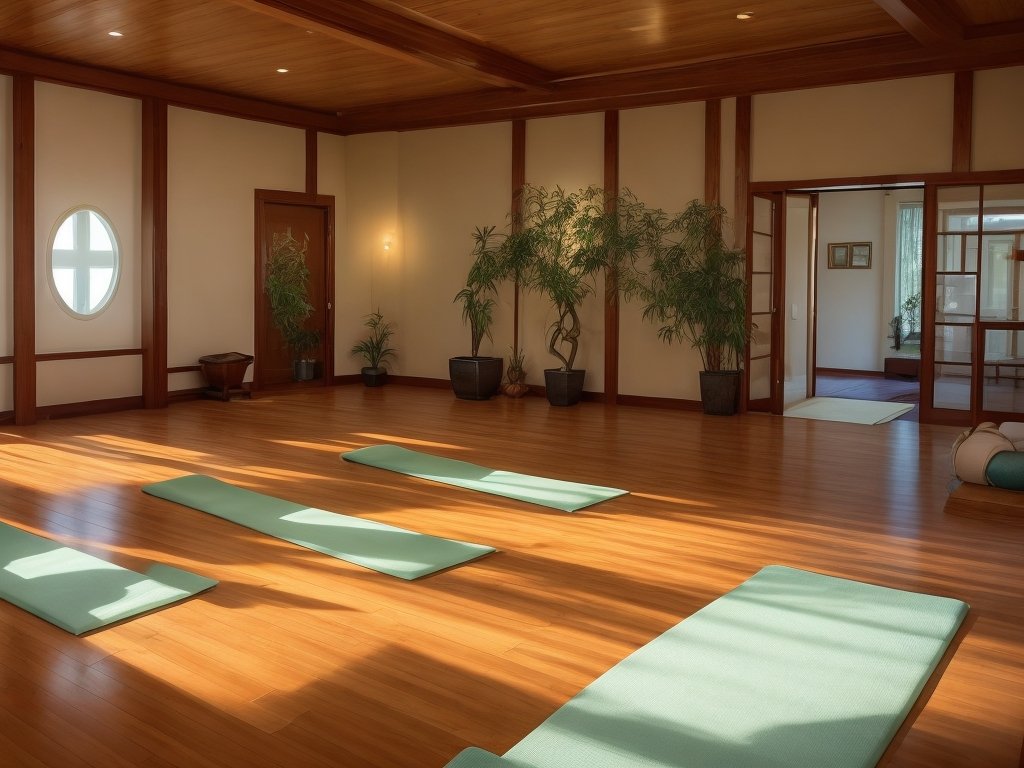How Physical Health Directly Influences Mental Well-being
The Intriguing Link Between Physical Health and Mental Well-being
Ever heard the saying, “A healthy body houses a healthy mind?” It’s not just a catchy phrase; there’s a deep-rooted truth behind it. The intricate dance between our physical health and mental well-being is something that’s been observed, pondered upon, and even marveled at for ages. But why is this connection so pivotal?
For starters, imagine feeling on top of the world mentally, but your body just doesn’t cooperate. Or, picture this: you’re physically fit as a fiddle, but there’s a storm brewing in your mind. Neither scenario sounds ideal, right? That’s because our body and mind are like two peas in a pod, always influencing and echoing each other’s states. When one suffers, the other isn’t far behind.
Understanding this link isn’t just for the science buffs or health gurus. It’s for every Tom, Dick, and Harry out there. Why, you ask? Because recognizing the bond between our physical and mental states can be a game-changer in our daily lives. It can guide our choices, from the food we eat to the activities we engage in, and even the way we handle stress.
But, here’s the real kicker: while many of us have a vague idea about this connection, few truly grasp its depth and significance. Dive in with us as we unravel this fascinating relationship, shedding light on why a jog in the park might just be the mood booster you didn’t know you needed. And trust us, by the end of this journey, you’ll view your body and mind in a whole new light.
The Historical Perspective: Physical and Mental Health Over the Ages

Ancient Civilizations and the Mind-Body Enigma
Long before our modern age of medicine and therapy, ancient civilizations had their fingers on the pulse of the mind-body connection. The Greeks, for instance, weren’t just about Olympic games and epic tales. They believed in the concept of “mens sana in corpore sano” – a sound mind in a sound body. This wasn’t just a catchy phrase; it was a way of life. They recognized that our mental and emotional states often mirrored our physical health.
Similarly, ancient Indian scriptures and traditional Chinese medicine echoed the same sentiment. They emphasized holistic well-being, where the body and mind were two sides of the same coin. In these cultures, physical exercises, like yoga or tai chi, weren’t just about flexing muscles. They were spiritual journeys, pathways to mental clarity and emotional balance.
The Evolution of Understanding in Modern Times
Fast forward to today, and you’d think we’d have it all figured out. But, here’s the twist: while we’ve made leaps and bounds in medical science, the intricate dance between our physical health and mental well-being remains a hot topic of research and debate. Modern psychology and medicine often hark back to those ancient beliefs, drawing parallels and seeking inspiration.
Today, with the rise of holistic health practices and mindfulness movements, there’s a renewed interest in understanding this age-old connection. From the bustling streets of New York to the serene landscapes of Bali, the quest for a harmonious balance between the body and mind is more alive than ever.
And while we’ve got gadgets and apps to track our physical health metrics, the real barometer? It’s how we feel inside. It’s that gut feeling, that inner voice that tells us when something’s amiss. So, as we stand on the shoulders of ancient giants, we continue our journey, unraveling the mysteries of the mind-body connection, one discovery at a time.
Insight 1: The Role of Regular Exercise in Mental Clarity

Ever felt that rush of endorphins after a good workout? That’s not just your body thanking you; it’s your mind too. Let’s dive deep into how regular exercise plays a pivotal role in sharpening our mental faculties.
The Science Behind the Sweat
Multiple scientific studies have been singing praises about the benefits of exercise on the mind. A study from Harvard, for instance, found that aerobic exercises, like running or swimming, can reduce the size of the brain’s “stress center” over time. This means less anxiety and a clearer headspace.
Moreover, exercise boosts the production of chemicals like serotonin and dopamine. These are our body’s natural “feel-good” chemicals, playing a crucial role in mood regulation and mental clarity. So, the next time you’re feeling a bit foggy upstairs, remember: a quick jog might just be the antidote.
Real-life Tales: From Couch Potatoes to Mental Mavericks
Take the story of Jake, a software developer from San Francisco. Plagued by work stress and bouts of anxiety, he found solace not in pills, but in pilates. Within months, not only did his physique transform, but he also noticed a significant improvement in his focus and mental clarity.
Or consider Maria, a teacher from Madrid. Juggling work and family, she often felt mentally drained. But once she incorporated a 30-minute yoga routine into her mornings, things took a turn. Not only did she feel more energetic, but her ability to handle classroom chaos also improved manifold.
Tips to Get Moving for a Clearer Mind
- Start Small: You don’t need to run a marathon. Even a 15-minute brisk walk can make a difference.
- Consistency is Key: It’s not about intensity; it’s about regularity. Aim for at least 150 minutes of moderate exercise every week.
- Mix it Up: Combine aerobic exercises with strength training. This not only benefits your body but also keeps the mind engaged.
- Stay Social: Join a local sports club or a dance class. It’s a fun way to exercise and offers a dose of social interaction.
- Mindful Movements: Incorporate practices like yoga or tai chi. They not only work on the body but also help in calming the mind.
Insight 2: Nutritional Balance and Emotional Wellness

Ever heard the phrase, “You are what you eat?” Well, it’s not just about your physical appearance. The food you consume plays a pivotal role in how you feel too. Let’s embark on a culinary journey, exploring the profound impact of diet on our emotional well-being.
The Mood-Food Connection
It’s no secret that munching on a bar of chocolate can lift our spirits on a gloomy day. But there’s more to the story than just sugar-induced euphoria. Various scientific studies have shown that our diet directly affects our mood and mental health. For instance, a diet rich in processed foods, sugars, and unhealthy fats can lead to feelings of lethargy, depression, and anxiety. On the flip side, a balanced diet, brimming with whole grains, lean proteins, and fresh produce, can elevate our mood and keep those blues at bay.
Brain Boosters: Nutrients that Matter
Our brain, the command center of our body, has specific nutritional needs. Here are some star players:
- Omega-3 Fatty Acids: Found in fish like salmon and mackerel, these fats are essential for cognitive function and emotional balance.
- Vitamin D: Often sourced from sunlight and fortified foods, it plays a role in mood regulation.
- B Vitamins: Present in leafy greens and whole grains, they’re crucial for energy and brain health.
- Magnesium: Found in nuts and seeds, it’s known for its role in combating anxiety and restlessness.
Crafting a Mind-Boosting Diet
So, how can we ensure our plate promotes both physical health and mental well-being? Here are some tips:
- Rainbow on a Plate: Aim for colorful veggies and fruits. Each color offers different nutrients, ensuring a holistic approach to health.
- Stay Hydrated: Water isn’t just for quenching thirst. It aids in cognitive functions and mood regulation.
- Limit Sugar and Processed Foods: They might offer a quick energy boost, but the subsequent crash can be detrimental to your mood.
- Lean Proteins: Incorporate sources like poultry, fish, and legumes. They provide essential amino acids, the building blocks for our brain.
- Mindful Eating: Pay attention to how different foods make you feel. Over time, you’ll recognize what truly nourishes your body and mind.
Insight 3: Sleep’s Undeniable Impact on Physical and Mental Health

Ever pulled an all-nighter and felt like a zombie the next day? It’s not just about those heavy eyelids; your mind feels the brunt too. Let’s dive under the covers and uncover the profound relationship between sleep, our bodies, and our minds.
The Dreamy Science of Sleep and Mental Health
Sleep isn’t just a passive activity; it’s when our body and mind get to work. During these precious hours, our brain processes the day’s events, forms memories, and releases hormones that regulate mood and stress. It’s like our body’s natural reset button.
Research has consistently shown that a good night’s sleep can enhance cognitive functions, improve concentration, and boost mood. On the flip side, chronic sleep deprivation can lead to a host of mental health issues, from depression to anxiety disorders. It’s not just about the quantity but also the quality of sleep. Ever heard of REM (Rapid Eye Movement) sleep? It’s this deep sleep phase that plays a pivotal role in emotional regulation and memory.
The Dark Side: When Sleep Eludes
The consequences of skimping on sleep aren’t just about feeling groggy. Here’s the lowdown:
- Mood Swings: Lack of sleep can make us more irritable, short-tempered, and vulnerable to stress.
- Cognitive Impairment: It affects our decision-making skills, concentration, and even creativity.
- Mental Health Disorders: Chronic sleep deprivation is a risk factor for several mental health conditions, including depression, anxiety, and even bipolar disorder.
Tips to Embrace the Sandman
Catching those Z’s is crucial. Here are some golden nuggets to help you drift off:
- Stick to a Schedule: Go to bed and wake up at the same time every day, even on weekends.
- Create a Sleep Sanctuary: Ensure your bedroom is dark, quiet, and cool. Consider using earplugs, an eye mask, or a white noise machine.
- Limit Screen Time: The blue light from phones and computers can mess with your sleep hormones. Try to switch off at least an hour before bed.
- Mind Your Diet: Avoid large meals, caffeine, and alcohol before bedtime.
- Relax and Unwind: Consider adopting relaxation techniques like reading, taking a warm bath, or practicing deep breathing exercises before hitting the sack.
Insight 4: Stress, Physical Health, and Its Mental Ramifications

In the hustle and bustle of modern life, stress seems to be our constant companion. But did you know that our physical health can be our knight in shining armor against this relentless foe? Let’s delve into the intricate dance between stress, our bodies, and our minds.
Physical Health: The Unsung Hero Against Stress
When our bodies are in tip-top shape, they become resilient fortresses against the onslaught of stress. Regular exercise, for instance, releases endorphins, our body’s natural painkillers and mood elevators. A well-nourished body, replete with essential vitamins and minerals, can better manage the physiological effects of stress, from high blood pressure to rapid heart rate.
But here’s the clincher: it’s not just about warding off stress. A healthy body can also speed up recovery after a stressful event, ensuring we bounce back faster and stronger.
The Vicious Cycle: Stress, Body, and Mind
It’s a tale as old as time. Stress takes a toll on our physical health, leading to ailments like headaches, digestive issues, and sleep disturbances. But the story doesn’t end there. As our physical health deteriorates, our mental well-being follows suit. We become more susceptible to anxiety, depression, and a host of other mental health issues. It’s a vicious cycle, where one feeds into the other, pulling us deeper into the quagmire.
Stress-Busting Techniques for Body and Soul
Breaking free from this cycle requires a holistic approach. Here are some tried and tested techniques:
- Physical Activity: Whether it’s a brisk walk, a yoga session, or a dance class, get moving. It’s not just about the body; it’s therapy for the soul.
- Mindful Meditation: Tune into the present moment. It’s a powerful way to declutter the mind and reduce stress.
- Balanced Diet: Eat a rainbow. A diet rich in fruits, vegetables, whole grains, and lean proteins can bolster the body against stress.
- Stay Connected: Talk to someone. Whether it’s friends, family, or a professional, sharing can halve the burden.
- Limit Stimulants: Reduce caffeine and sugar intake. They might give a quick energy boost but can exacerbate stress in the long run.
Insight 5: The Mind-Body Connection in Chronic Illnesses

When we think of chronic illnesses, we often picture the physical toll they take. But there’s another side to this coin: the profound impact on the mind. Let’s journey through the intricate pathways connecting chronic physical conditions to our mental state.
Chronic Illnesses: More Than Just Physical Pain
Living with a chronic illness isn’t just about managing physical symptoms. It’s a mental and emotional marathon. Conditions like diabetes, heart disease, or arthritis can lead to feelings of frustration, anxiety, and even depression. The constant doctor visits, medication regimens, and lifestyle adjustments can be overwhelming.
Moreover, the pain and fatigue associated with many chronic conditions can exacerbate feelings of hopelessness and isolation. It’s a two-way street: while chronic illnesses can lead to mental health challenges, conditions like depression can also exacerbate physical symptoms, creating a feedback loop of distress.
Strategies for Nurturing Mental Well-being Amidst Chronic Illness
Living with a chronic condition doesn’t mean resigning oneself to a life of mental anguish. Here are some strategies to foster mental resilience:
- Stay Connected: Isolation can be a silent enemy. Engage with support groups, connect with loved ones, and consider therapy. Sharing your journey can be therapeutic.
- Educate Yourself: Knowledge is power. Understand your condition, treatment options, and potential challenges. This can help in feeling more in control.
- Mindfulness and Meditation: These practices can help in managing pain, reducing stress, and cultivating a positive mindset.
- Set Realistic Goals: Break tasks into manageable steps, prioritize, and give yourself grace. Celebrate the small victories.
- Stay Active: While it’s essential to respect your body’s limits, regular physical activity, tailored to your condition, can boost mood and alleviate some physical symptoms.
Insight 6: Physical Activities as Therapeutic Interventions for Mental Disorders

In the realm of mental health, sometimes the most potent remedies aren’t found in a pill bottle but in the rhythmic movements of our bodies. From the graceful postures of yoga to the flowing motions of tai chi, physical activities are emerging as powerful allies in the battle against mental disorders. Let’s lace up our shoes and explore this fascinating intersection of body and mind.
The Therapeutic Trio: Yoga, Tai Chi, and Aerobic Exercises
Yoga: An ancient practice rooted in Indian philosophy, yoga is more than just flexibility. It’s a holistic approach that combines physical postures, breathing exercises, and meditation. Yoga has been shown to reduce symptoms of depression, anxiety, and PTSD, thanks to its ability to regulate stress hormones and enhance mood-boosting neurotransmitters.
Tai Chi: Often described as “meditation in motion”, this Chinese martial art is a dance of slow, deliberate movements. Beyond its physical benefits, tai chi can be a balm for the mind, reducing symptoms of anxiety, depression, and even improving cognitive functions.
Aerobic Exercises: Think running, cycling, or even brisk walking. These heart-pumping activities are not just for cardiovascular health. They release a flood of endorphins, the body’s natural mood lifters, and have been linked to reduced symptoms in conditions like depression and anxiety.
Complementing Traditional Mental Health Treatments
Physical activities aren’t about replacing traditional therapies but enhancing them. Here’s how:
- Natural Mood Boosters: As mentioned, activities like aerobic exercises release endorphins, which can provide an immediate mood lift.
- Mindfulness and Presence: Practices like yoga and tai chi emphasize being in the present moment, a skill invaluable for those battling anxiety or PTSD.
- Empowerment: Taking charge of one’s physical health can foster a sense of control, often eroded in those with chronic mental health conditions.
- Social Connection: Group classes can provide a sense of community and belonging, crucial for mental well-being.
Insight 7: The Role of Community and Group Physical Activities in Bolstering Mental Well-being

Humans are social creatures. We thrive on connection, camaraderie, and community. Combine this innate need for social interaction with the undeniable benefits of physical activity, and you’ve got a potent recipe for mental well-being. Let’s dive into the world of community-driven physical activities and their role in uplifting our spirits.
The Dual Power: Social Interaction Meets Physical Activity
There’s something magical about sweating it out with a group, be it a dance class, a community run, or a group yoga session. The physical benefits are evident: improved cardiovascular health, enhanced flexibility, and muscle strength. But the mental perks? They’re profound.
Group activities foster a sense of belonging. They break the chains of isolation, especially crucial in today’s digital age where loneliness is an epidemic. Moreover, the shared experience of pushing boundaries, celebrating achievements, and even laughing over missteps creates a bond that’s therapeutic.
Community-Driven Physical Activities: A Beacon for Mental Health
Group Yoga Sessions: Beyond the physical postures, yoga emphasizes mindfulness and presence. Practicing it in a group setting amplifies its mental benefits. The collective energy, the shared breaths, and the communal experience of relaxation can be deeply healing.
Community Runs: Whether it’s a marathon or a fun run, running as a community is exhilarating. The shared goals, the mutual encouragement, and the collective high of crossing the finish line can be a significant mood booster.
Dance Classes: Dance is expression. It’s joy, sorrow, passion, and a myriad of emotions rolled into movement. Group dance classes, be it salsa, hip-hop, or ballroom, are not just about learning steps. They’re about connection, expression, and liberation.
Outdoor Group Workouts: Think of boot camps in the park or group cycling expeditions. The combination of nature, physical exertion, and community can be a balm for the mind.
Embracing Community for Holistic Well-being
While individual workouts have their place, there’s an undeniable charm in community-driven physical activities. They’re not just workouts; they’re experiences. They’re not just about burning calories; they’re about building connections. In a world where mental health challenges are on the rise, such community activities can be the lighthouses guiding us to the shores of well-being.
The Future of Physical and Mental Health Integration

The intricate dance between physical and mental health has been the subject of study for ages. But as we stand on the brink of technological revolutions, what does the future hold for this symbiotic relationship? Let’s gaze into the crystal ball and explore the trends and innovations shaping the next chapter of health integration.
Predictions and Trends for the Future
- Holistic Health Approach: The lines between physical and mental health will blur further. We’ll see a more holistic approach to health, where mental well-being is as prioritized as physical fitness.
- Personalized Health Plans: With advancements in genomics and personalized medicine, individuals might receive health plans tailored to their genetic makeup, addressing both physical and mental predispositions.
- Virtual Reality (VR) Therapies: Imagine combating anxiety through a calming VR beach experience or addressing phobias through controlled VR exposures. The future is immersive!
Technology: The Bridge to Deeper Understanding
Wearable Tech: Devices like smartwatches will evolve. They won’t just track your heart rate but might predict anxiety attacks based on physiological changes or suggest mindfulness exercises when stress levels spike.
AI and Mental Health: Artificial Intelligence could revolutionize mental health diagnostics. By analyzing patterns, speech, or even social media activity, AI might detect early signs of mental health issues.
Telehealth and Remote Therapies: The pandemic has already shown us the potential of telehealth. This trend is likely to continue, making therapy and consultations accessible to those in remote areas or those who prefer the comfort of their homes.
In essence, the future of physical and mental health integration is bright, promising, and brimming with possibilities. As technology and innovation pave the way, we’re set to understand the mind-body link like never before.
Conclusion: The Symbiotic Dance of Physical and Mental Health
As we’ve journeyed through the seven insights, it’s evident that the realms of physical and mental health are not isolated entities. They’re intertwined, each influencing the other in profound ways. Let’s take a moment to recap:
- Regular Exercise and Mental Clarity: The mind sharpens as the body moves.
- Nutritional Balance and Emotional Wellness: What we eat can shape how we feel.
- Sleep’s Impact: Rest is not just physical; it’s a mental recharge.
- Stress and Its Ramifications: Physical health can be our shield against life’s pressures.
- Chronic Illnesses and the Mind: The body’s prolonged battles can cast shadows on the mind.
- Therapeutic Physical Interventions: Activities like yoga and tai chi as mental salves.
- Community Activities: Together, we heal better, both in body and spirit.
In this digital age, where screens often dominate our lives, it’s easy to forget the basics. But our bodies and minds have an age-old pact. They look out for each other. And as we’ve seen, when one thrives, the other rejoices.
So, dear reader, as you step forward, remember this dance. Prioritize both your physical and mental well-being. They’re not just parts of you; they’re partners, working in tandem to create the symphony of your overall health.
